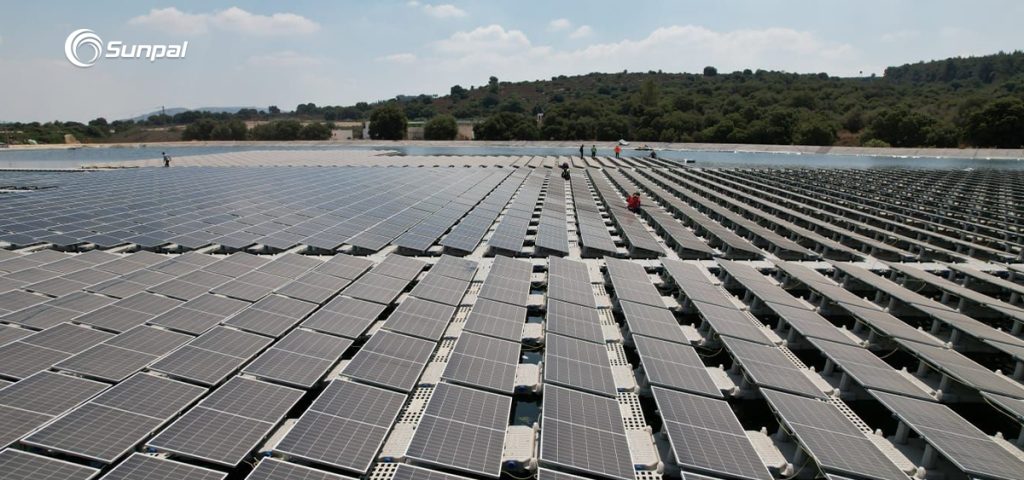
As the world grapples with the challenges of climate change, renewable energy sources like solar power have gained unprecedented momentum. While China has made significant progress in onshore solar installations, its focus is now shifting towards unlocking the vast potential of offshore solar PV projects. This article takes an in-depth look at the regulatory frameworks, innovative technologies, and global best practices that can guide China's offshore solar PV ambitions.
China's Regulatory Landscape
Recently, the Ministry of Natural Resources of China has issued the guidelines which restrict the offshore solar PV projects to specific zones: thermal discharge areas near nuclear plants, salt ponds, sea aquaculture zones, and offshore wind-solar hybrid sites. The emphasis on environmental impact assessments underscores China's commitment to sustainable development, albeit at a cautious pace.
Global Offshore Solar PV Innovations
1. The Netherlands: Floating Solar Farms
The Netherlands, known for its innovative water management solutions, has seamlessly integrated floating solar farms into its landscape. These installations not only generate clean energy but also reduce water evaporation, which present double benefits of solving both energy and water shortage issues. The country's success in this sector serves as a blueprint for other nations with extensive water bodies.
2. Japan: Resilient Solar Platforms
Japan's unique geography, characterized by frequent typhoons and tsunamis, has catalyzed the development of resilient offshore solar platforms. These platforms are capable of withstanding extreme weather conditions, demonstrating Japan's commitment to offshore solar PV and offering valuable insights for countries facing similar challenges.
3. UK: Offshore Renewable Energy Targets
The UK has set ambitious targets to obtain a significant portion of its energy from offshore sources by 2030. To achieve this, the government has rolled out incentives and subsidies, which accelerates the development of both offshore wind and solar projects. The UK's focus on renewable energy aligns with its broader sustainability goals, driving innovation and investment in offshore solar PV technologies.
4. South Korea: High-Efficiency Solar Panels
South Korea, constrained by limited land availability, has prioritized offshore solar as a viable renewable energy source. The country's focus on technological advancements has led to the development of high-efficiency solar panels and innovative installation methods, driving down costs and boosting adoption rates.
5. India: Coastal Solar Potential
The vast coastline of India presents a golden opportunity for offshore solar PV development. Recognizing this potential, the Indian government has prioritized offshore solar in its renewable energy roadmap. Its collaborative efforts with international experts aim to develop sustainable offshore solar solutions tailored to India's unique energy landscape.
6. Australia: Floating Solar Innovations
Australia, with its abundant sunshine and expansive water bodies, has begun to explore the potential of floating solar installations. These projects not only harness solar energy but also reduce water evaporation, making them particularly attractive for drought-prone regions. Australia's initiatives in this sector offer valuable insights for countries with similar climatic conditions.
7. Germany: Hybrid Wind-Solar Projects
Germany, a global leader in renewable energy adoption, has pioneered the concept of hybrid wind-solar projects. By integrating wind and solar installations, these projects optimize land use and energy generation, offering a holistic approach to renewable energy deployment. Germany's innovative approach serves as a benchmark for countries seeking to maximize renewable energy output.
Challenges and Opportunities for China
While China's offshore solar PV market is still in its infancy, the country has the opportunity to learn from global best practices and foster domestic innovation. A cohesive national policy framework, backed by robust research and development, can accelerate the growth of China's offshore solar PV sector.
However, challenges remain. The discrepancies in provincial policies, inadequate infrastructure, and high initial costs pose significant obstacles for potential project developers. Moreover, the lack of a unified national policy framework has led to inconsistencies in project approvals, which creates the uncertainty for investors and developers alike.
Charting the Course Forward
Now China stands at a crossroads, are ready to leverage its vast offshore solar PV potential while navigating the complex regulatory and market challenges. By embracing the global best practices, fostering domestic innovation, and developing a cohesive national policy framework, China can unlock the full potential of its offshore solar PV sector.
As the global energy landscape evolves, offshore solar photovoltaics has become a promising renewable energy source, which provides countries with a viable alternative to traditional land-based solar installations. By learning from global innovations and tailoring strategies to local needs, China can lead the way in the development of offshore solar PV industry, and drive the transition towards a sustainable energy future.
This comprehensive overview highlights the intricacies of China's offshore solar PV industry, offering valuable insights for industry stakeholders, policymakers, and investors alike. As the offshore solar PV market continues to evolve, keeping up with global trends and innovations is critical to success.
